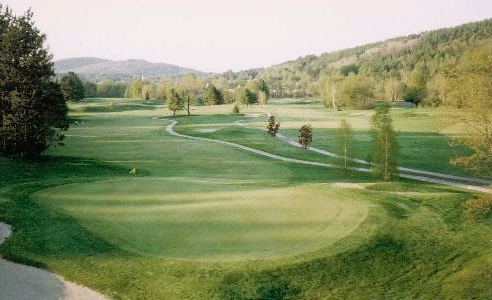
Call Now & Start Saving on Golf Today! 800-321-8269
Handicap calculator is now LIVE!!
Once you become a member, you will have the ability to input your scores and establish a handicap index. After you have entered a minimum of 5 scores, you can print your handicap index card and use in local tournaments.
REGISTER NOW FOR FALL MEMBER-GUEST @ WOODLOCH; GET $35 MID-WEEK ROUND
You can now register for the Fall Member-Guest Tournament to be held at The Country Club at Woodloch Springs on Wednesday, October 17. Just call 1-800-321-8269. The entry fee is $79 and includes golf, cart, dinner, prizes and awards. Any Golf Card member who registers before August 1 will receive one midweek round of golf for $35 at Woodloch to be used anytime this season.
The Woodloch tournament has been a hit with Golf Card members and guests since it began two years ago. The combination of a scenic 4 ½ star course dressed up in beautiful fall colors and the first-class service Woodloch is known for adds up to a fulfilling day.
There is a 136 player limit so we encourage early registration.To register Email us at office@golfcard.com Please include your contact information and we will be glad to sign you up!
COURSE SPOTLIGHT - Independence Day affiliates
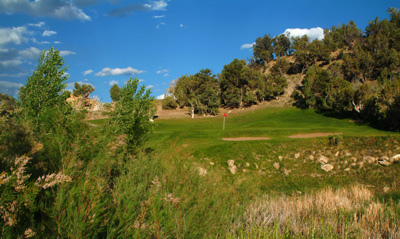
- Rifle Creek (Rifle, Colorado)
- Soldier Mountain Ranch CC & Resort (Fairfield, Idaho)
- Colonial Acres (Houma, Louisiana)
- Francis Scott Key GC (Finksburg, Maryland)
- Centennial Acres (Sunfield, Michigan)
- Yankee Springs GC (Wayland, Michigan)
- Cameron Veterans Memorial GC (Cameron, Missouri)
- American Legion GC (Hannibal (Missouri)
- Colonial Ridge Golf (Laurens, New York)
- Monroe CC (Monroe, New York)
- The Tradition GC (Charlotte, North Carolina)
- Monroe CC (Monroe, North Carolina)
- Franklin Valley GC (Jackson, Ohio)
- Adams County CC (West Union, Ohio)
- Adams GC (Bartlesville, Oklahoma)
- Colonial Valley Links (Grants Pass, Oregon)
- American Legion CC (Mount Union, Pennsylvania)
- Hancock Park Muni GC (Lampasas, Texas)
- Colonial Hills GC (Forest, Virginia)
- Colonial GC (Williamsburg, Virginia)
TRAVEL SPOTLIGHT - New Hampshire
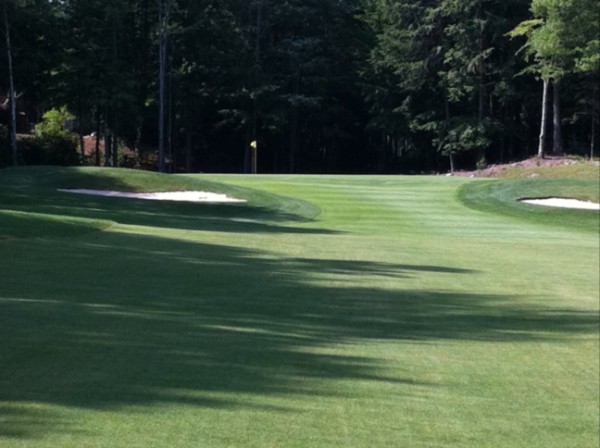
Eastman Golf Links
Grantham
603-863-4500
www.eastmangolflinks.com
Golf Card fee: 50% off green fee
Non-Golf Card rate: $70
Rated 4 stars by New England Golf Guide - one of only a handful of courses in New Hampshire to earn this distinction.
Newport Golf Course
Newport603-863-7787
www.newportgolf.com
Golf Card fee: $35
Non-Golf Card fee: $51 wkdays; $59 wkends
The combination of changes in elevation, the meandering Sugar River, natural wetland areas, annual and perennial flower gardens, eight ponds and tree-lined fairways create a beautifully scenic and serene backdrop for an enjoyable round of golf.
Wentworth Golf Resort
Jackson603-383-9641
www.wentworthgolf.com
Golf Card fee: $10 off green fee
Non-Golf Card fee: $50 wkdays; $60 wkends
This picturesque course provides outstanding views of the majestic Presidential Range and the scenic splendor of the Wildcat and Ellis Rivers as they meander throughout the course.
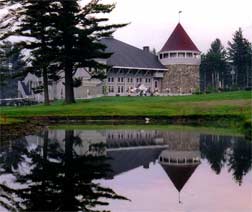
Maplewood Resort
Bethlehem603-869-3335
www.maplewoodgolfresort.com
Golf Card fee: $35
Non-Golf Card fee: $39-65
Located in the shadow of Mt. Washington in the beautiful White Mountain countryside. This Donald Ross design is rich with old New England charm including century-old stonewalls and majestic trees lining the naturally contoured fairways.
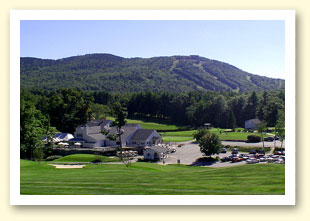
Crotched Mountain
Francestown603-588-2923
www.crotchedmountain.net
Golf Card fee: $35 wkdays; $50 wkends
Non-Golf Card fee: $49 wkdays; $60 wkends
Picturesque New England course designed by Donald Ross in 1929 and restored to his original routing in 1992.
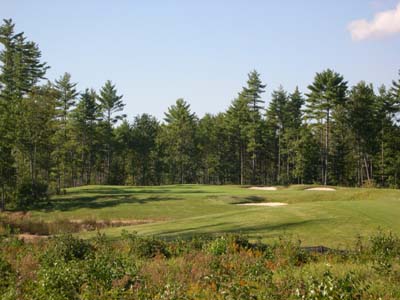
The Oaks Golf Links
Somersworth603-692-6257
www.theoaksgolflinks.com
Golf Card fee: $45
Beautifully-conditioned, parkland course with some of the best bent grass fairways and greens in New England.
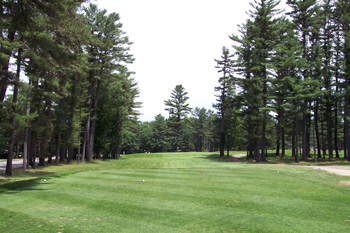
Beaver Meadow GC
Concord603-228-8954
www.beavermeadowgolfcourse.com
Golf Card fee: 2 for 1
Oldest public course in New Hampshire
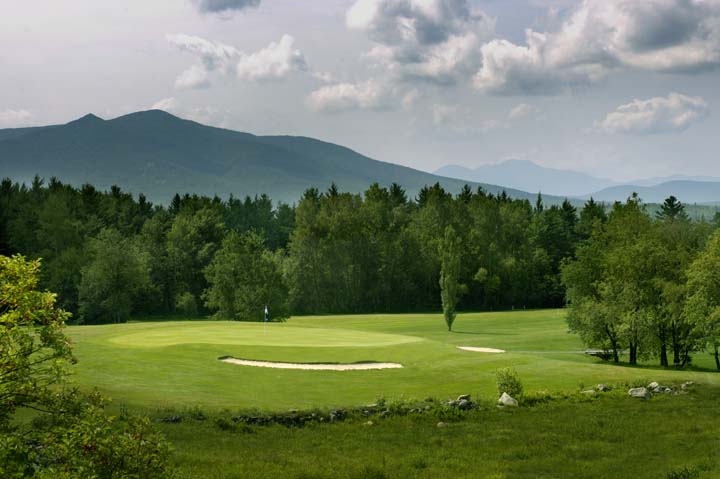
Waumbek CC
Jefferson603-586-7777
www.playgolfne.com
Golf Card fee: Wkdys $33, wknds $43.50
Another classic New Hampshire course built in the late 1800s. Entrancing views of the Presidential Mountain range.
Balsam's Panorama Course Closed Indefinitely
The Panorama Course at The Balsams Resort in Dixville, New Hampshire, annually one rated one of the top courses in the state is closed indefinitely as The Balsams undergoes renovations. Unfortunately, those renovation plans are currently on hold as the local planning board rejected a subdivision request submitted by new ownership as part of their remodeling plan. The owners say the course will be maintained while its closed.INTERVIEW - Herm Keiser Jr.
Herm Keiser Sr. won the Masters in 1946, defeating Ben Hogan by one stroke. Herm Keiser Jr., born almost nine months to the day after that victory, couldn't be more proud of his dad's improbable accomplishment - even 59 years later. In fact, the Director of the Golf School at Hanah Country Club in Margaretteville (a Golf card affiliate) is seemingly more comfortable talking about his dad than anyone else. In this interview, he shared some of his memories and recollections:
GC: Obviously, you live your father's Master's victory through what you've and heard over the years. What stands out the most?
Keiser: I have a large framed photo of my father with Bobby Jones and Ben Hogan at the awards ceremony - that's very special. For a young kid from Springfield, Ohio who had to help support his family as early as seven years old could win the Masters, was really remarkable. It was the highlight of his life.
GC: In articles and interviews, your father seemed to always keep his distance from the Augusta environment, never really embracing the place. Why was that?
Keiser:I don't want to get into too many of the details, but the Masters back then was a huge gambling scene among the Augusta members. Let's just say there were certain influential members who apparently didn't have money on my father. That's why he didn't go off last in the final round even though he was the leader. And why they paired him with Sam Snead in the third round even though Snead was way back. They thought Snead would be a distraction. My father wasn't too keen on that whole group down there. But I always used to tell him that he won the greatest Masters of all time because despite all the forces working against him, he still won.
GC: Your dad still must have had some good moments down there in all the years he went?
Kesier: Yes he did. In 1992, he met Fred Couples before the tournament and said to him, "you're Freddy Couples - I've been watching you and anyone who tees it up against you has their hands full.' Sure enough Fred wins the tournament and in a subsequent interview with Jim Nantz of CBS, Fred mentioned how much he enjoyed having the past champions there and singled out my dad and how nice he was to him.
GC: And he still went back year after for the Champions Dinner?
Kesier: They paid him $1,500 and then $5,000 in the last few years to attend the dinner. It was hard for him to turn that down. He even went to the Tradition tournament every year on the Champions Tour - they paid him $5,000 to attend functions for past Major winners. And they put him up in five-star hotels. That was tremendous for a guy in his 80s.
GC:You went with your father to August every year - helped drive him down. Do you still go?
Keiser: We still receive two tickets every year for the Masters even though my dad passed away. But we haven't gone. It's not the same as when we went with dad. He would receive the royal treatment there - he could sign for everything, go in the clubhouse. We just get two tickets now - no special clubhouse access nor other privileges.
GC: Now you and your dad liked to gamble a little bit as well. How did that go?
Kesier: My father was a tremendous gambler. We would just go out to country clubs in Akron, Ohio and clean up. But he would tell me to shoot 80 one day or hit a couple of out of bounds so we didn't win every day and lose our game.
Even when he was in his 80s, we would still beat up on the same guys in Ohio.
GC:What was your father's relationship with Ben Hogan?
Keiser: He was friendly with Hogan and always thought he was the best golfer he ever saw. In 1947 - a year after he won the Masters -- Hogan lent him $1,000 to stay on Tour.
My father and Dutch Harrison were the first to find Hogan and his wife after the Greyhound bus hit their car in that terrible accident. They were traveling to the next tour stop. When they got to the hospital, Hogan motioned to my Dad to come over to his bed and said to him, "Check my clubs." My father somehow got the clubs and brought them to Hogan's hospital room. When he heard Hogan say, "check my clubs," he told me he knew the little man would be back.
GC:What did your dad do when he was done playing the tour?
Kesier: He bought a 27-hole golf course, which regrettably he sold some years later. That would have been a nice facility for my brother and me to run. Then he owned a driving range in his later years.
GC: Of all the times you spent with your father, what is your favorite memory?
Keiser: When I was 16 and my brother Greg was 12, my father had planned a two-week fishing trip for the family in northern Ontario in Canada. On the way up, my dad, who was 46 years old at the time, planned on playing the Canadian Open one last time. He was paired with Mo Norman in the first round and Doug Ford in the last round. I caddied for him. Wouldn't you know a tournament he was playing almost as an afterthought, he led after 70 holes. He struggled the last two holes (I might have misclubbed him on the last hole), ended up finishing tied for 7th and won $1,600. We then continued on our fishing trip. What a great trip!
THE 1946 MASTERS
- 1. Herm Keiser 69-68-71-74-282
- 2. Ben Hogan 74-70-69-70-283
- 3. B. Hamilton 75-69-71-72-287
- T4. J. Demaret 75-70-71-73-289
- T4. J. Ferrier 74-72-68-75-289
- T4. K. Laffoon 74-73-70-72-289
- T7. C. Harbert 69-75-76-70-290
- T7. C. Heafner 74-69-71-76-290
- T7. B. Nelson 72-73-71-74-290
- T7. S. Snead 74-75-70-71-290
COURSE REVIEW
Here are some Golf Card courses you might want to check out - by recommendation of your fellow Golf Card members.
Missouri
Osage NationalLocation: Lake Ozark
Phone: 573-365-1100
Website: www.osagenational.com
Golf Card fee: 20% off
Of special note: Rated the No.1 course in Golf Card's Favorite 50 poll of members
Member comment: "Once again it's time to play and as usual our group is looking forward to playing this course. Everyone should know that staff here open their arms to welcome you."
Vermont
Lake Morey Inn & CC
Location: Fairlee
Phone: 802-333-4800
Website: www.lakemoreyresort.com
Golf Card fee: $35
Of special note: Rated the 4 ½ stars by Golf Digest
Member comment: "Friendly staff, challenging layout, good condition, fair price."
We encourage all members to submit reviews of Golf Card courses they have played. Just go to golfcard.com, log on, go to Course Directory, select a specific course and go to the Course Review prompt. You will be asked to rate a course on playability, conditions, amenities and whether you would recommend it to a friend. You can also offer personal comments. We will publish many of the reviews in this online newsletter.
JUST SAYIN' - Ken Cohen
Some of the guys at my club have been following the PGA's Tee it Forward and moving up one tee box when they play. Yes, it took a few years for them to finally cast their egos aside and start playing a course where they can actually use a 9-iron or wedge for their second shots into par fours and not their third; where they can hit a mid-iron into par threes, not a 3-wood or driver; where they can actually experience the thrill of reaching a par five in two with a big drive, not just hoping to reach the fairway.
My friend Pete already shot his first round under 80 in almost three years - including three birdies. When he was playing the back tees with me, he could go weeks without making one birdie and would consistently play for bogey on some holes. Since going to the blue tees and shortening the course by almost 500 yards, he's having the time of his life. He got home in two on a par five and actually hit four greens in a row in regulation. He was finally experiencing golf at a different level - even a small dose of what Tour players feel.
His scores are improving and so is his enjoyment level. He's less fatigued when's he done playing and his overall outlook is much more positive. He's also become a faster player - not only because he's hitting less shots, but he's spending less time chipping and hitting out of sand. That's good news for all of us - our four-a-half hour rounds are now closer to four hours.
Really, it's a win-win for everyone. Not to mention the golf course. When players are shooting lower scores, they enjoy the game more. That's a fact. Happy golfers are more likely to stick around the course and buy lunch, pick up something in the pro shop or tip the cart boy. It's only a few hundred yards difference, but it certainly goes a long way.
The other day, I went out with my head professional and we moved all the way up to the red tees. We wanted to see what it was like to Tee it Forward as well. We had a blast, though ironically, we didn't score any better on a course that was 600 yards less that what we usually play. Yes, we were able to drive several par fours and hit flip wedges into the par threes, but we also could now fly greens and actually get too close to some greens to hold them with approach shots. We can't wait to do it again...it broke up the monotony of playing the same tees every time and virtually playing the same shots over ad\nd over again.
Golf is perhaps the only sport that affords this type of flexibility. We should all take advantage of it - whether to play better or just play differently.
RULES SCHOOL - Ball must be holed
Have you seen this happen: on a par four, a player chips his third shot from off the green and the ball lodges between the cup and the pin. All of the ball is not below the lip of the hole. The player retrieves the ball as is and is all excited about his birdie. The only problem is he made a par four because he needs to take a penalty stroke for lifting his ball without marking it. A ball is only considered holed when it is at rest within the circumference of the hole and all of it is below the level of the lip of the hole. If the player had simply moved the flagstick so the ball dropped down into the hole, he would have made his birdie. Since he lifted the ball without it being holed, the player is technically penalized for lifting a ball in play without first marking it.
MEMBER'S TEE - Shanking
I've got a bad case of the dreaded shanks. I'm desperate - my summer is about to be ruined ... HELP!
Ron Alloc
Kalamazoo, Michigan
Golf Card Instructional Staff:
Don't despair yet. A shank is the result of the path of your club coming from the outside in, exposing the hosel to the ball at impact. Excessive arm and hand pressure on the club as well as the body weight moving forward toward the toes are all contributing factors to shanking. Here's the best drill to stop shanking:
Set a piece of cardboard, 2 x 4 in size, on the ground running parallel to the target line and just on the far side of the ball. Leave about ½ inch between the board and the toe of the club after addressing the ball. At first, you will probably hit the board behind the ball, reflective of your outside-in path. Keep hitting balls until the club does not hit the board at impact. This will get your club on a more inside path and going down the target line through impact.
If you have a swing problem or other flaw with your game, e-mail us at memberstee@golfcard.com. Please include a brief description of what your tendencies are, what you want fixed and our Instructional Staff will consider your submission for response.
SWING THOUGHTS - Don Veller
I admit I'm a golfaholicAnd I say this everyday
Golf is such an easy game -
It's just that it's hard to play.

